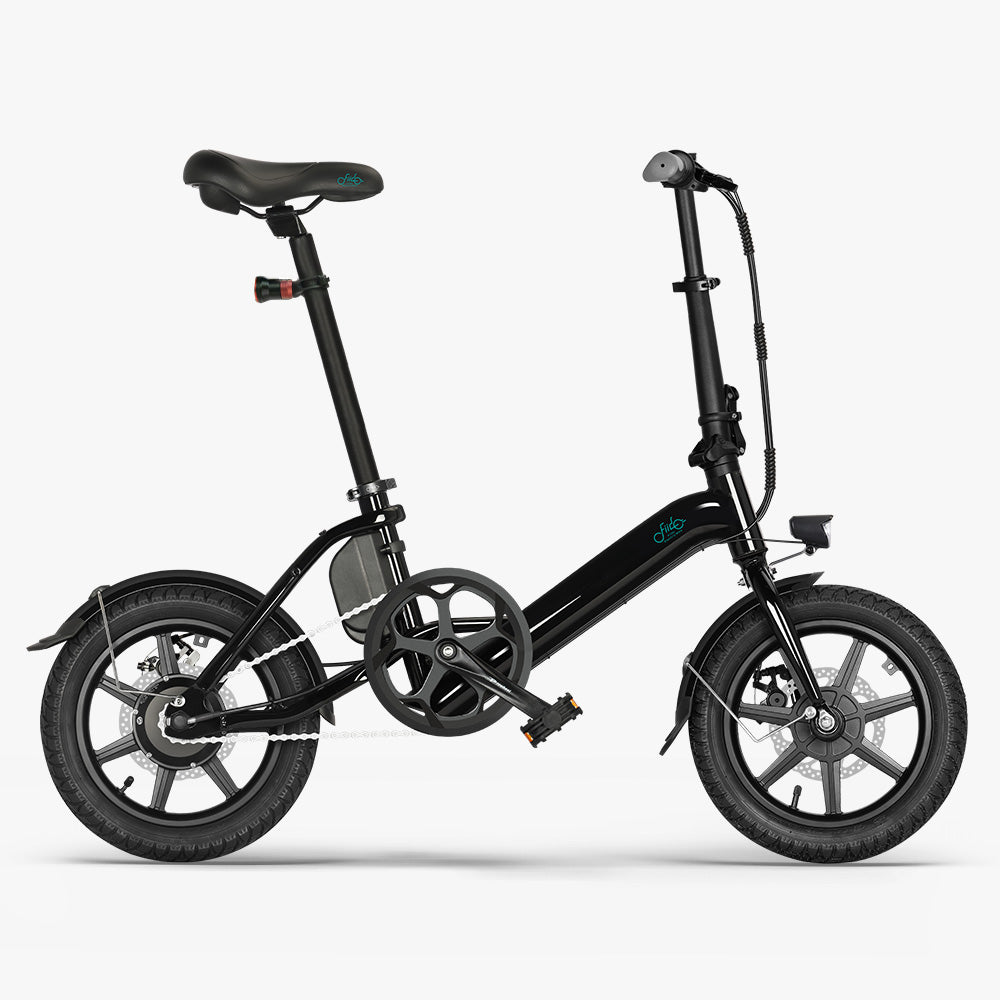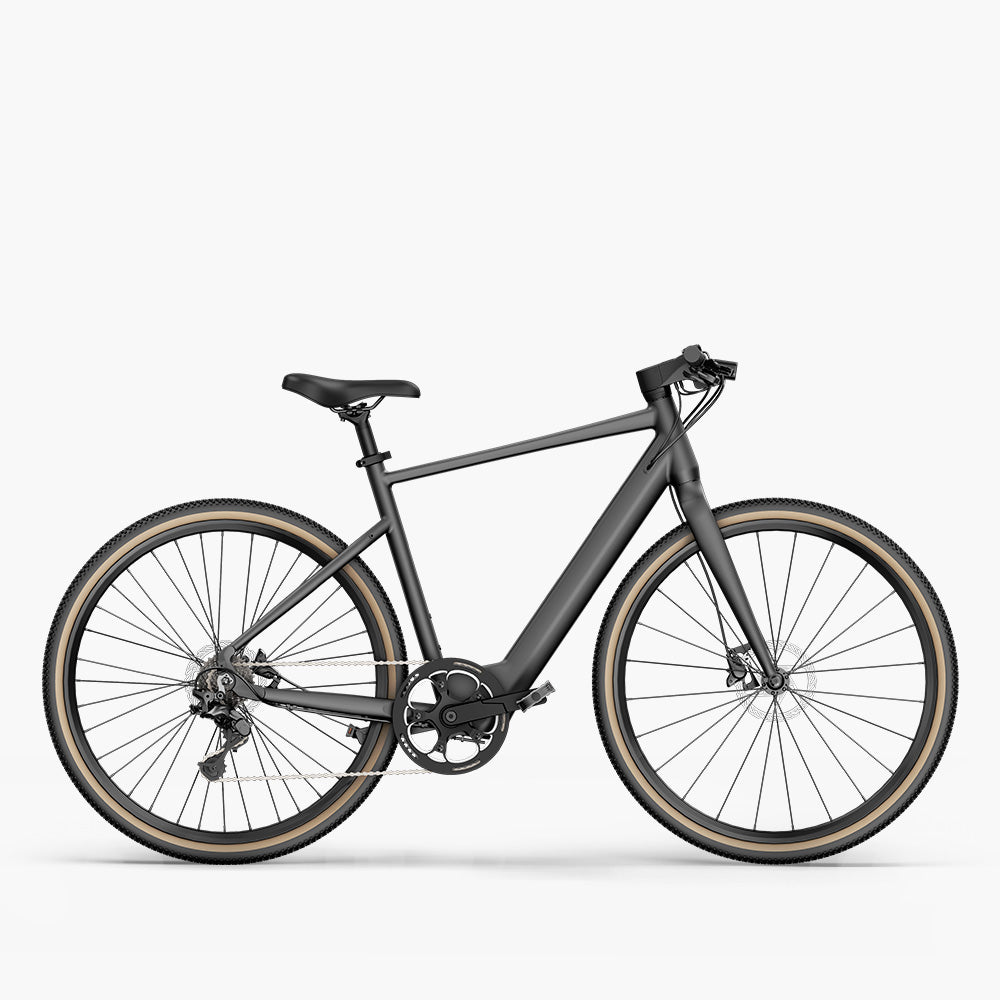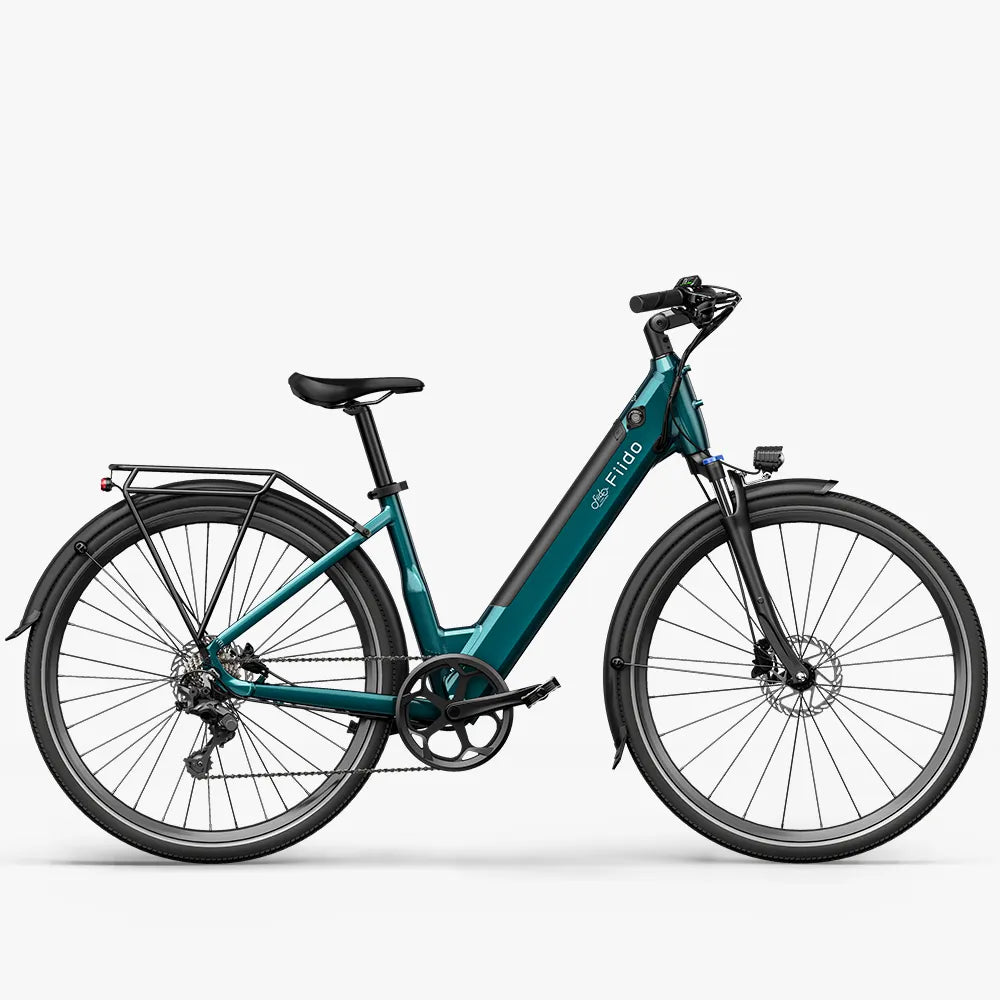Transporting electric bikes may seem like a daunting task, but with the right preparation and understanding of the process, it can be done efficiently and safely. Whether you're shipping domestically or internationally, it's crucial to understand the available services, associated costs, and how to prepare for transportation. This article will break down the shipping process step by step, focusing on bicycle dimensions, cost-saving strategies, and specific tips for transporting folding models.
Differences Between Transporting Electric bikes and Standard bikes
-
Battery Handling: Electric bikes are equipped with lithium batteries that require special shipping regulations, unlike standard bicycles.
-
Weight and Size: Electric bikes typically weigh between 20 to 35 kg and are bulkier, resulting in higher shipping costs, while standard bicycles weigh about 10 to 15 kg, leading to lower costs.
-
Packaging Requirements: Electric bikes require specialized shipping boxes and foam materials to protect the battery, whereas standard bicycles can be shipped in simple cardboard boxes.
-
Shipping Methods: Electric bikes need to be shipped using companies capable of handling batteries, while standard bikes can be sent through regular courier services.
- Costs: Shipping electric bikes is more expensive, including battery handling fees; standard bicycles are relatively cheaper.
Next, let's take a closer look at these aspects.
How Much Does It Cost to Ship an Electric Bike
Electric bikes shipping services are specialized logistics solutions designed to meet the unique challenges of transporting electric bikes, including handling their heavy frames and sensitive lithium-ion batteries. Many logistics companies offer this service, including specialized bicycle transport companies, large courier services (like FedEx and UPS), and freight services.
Shipping Costs
Shipping costs for electric bikes can vary based on several factors, including distance, weight, size, and the level of service you choose. For example:
- Domestic Shipping: The cost for shipping within the same country typically ranges from $100 to $300, depending on the bike's size and weight, the shipping method (ground or air), and whether additional services such as insurance or expedited shipping are included.
- International Shipping: The cost to ship electric bikes overseas can be significantly higher, usually between $300 and $800, depending on the destination and shipping options. Countries with strict regulations on shipping lithium batteries (such as the United States or EU countries) may incur additional costs due to special handling requirements.
In addition to basic shipping fees, you may also need to consider other expenses, such as packaging, customs duties, and insurance, to ensure your electric bike is protected during transit.
How to Ship Electric Bikes of Different Sizes
Electric bikes come in various shapes and sizes, from compact folding models to large mountain bikes. The shipping methods and strategies largely depend on the size and weight of the bicycle.
Small and Folding Electric Bikes
Small and folding electric bikes are typically lighter, weighing between 10 to 25 kg, and are more compact, reducing to about 70 cm × 50 cm × 30 cm in size when folded. Due to their lightweight and compact nature, shipping costs for these bicycles are usually lower.
Lighter folding electric bikes can be packed into smaller boxes, reducing transportation costs. For these bicycles, the packaging process involves folding the frame and securely wrapping sensitive components like handlebars and wheels to prevent damage.
Large Electric Bikes
Large electric bikes, such as off-road models or electric road bikes, typically weigh between 20 to 35 kg and measure around 1.8 m × 1 m × 0.6 m. The shipping costs for these bicycles are relatively high.
For large electric bikes, like robust off-road models, more space and care are needed during shipping due to their size and weight. These bicycles often require partial disassembly to fit into standard-sized bicycle shipping boxes. The front wheel, pedals, and handlebars are usually removed to help reduce the overall box size, making handling during transport easier.
In both cases, it’s important to check the shipping provider’s size and weight limits to avoid additional charges for oversized packages.
Battery Handling for Electric Bikes: Safety and Detailed Regulations
Transporting an electric bike requires extra caution when dealing with lithium-ion batteries. These batteries are classified as Dangerous Goods due to their potential to overheat or short-circuit, which can cause fires or other safety issues. Here is a detailed breakdown of how to handle and prepare your electric bike battery for shipping safely and in compliance with regulations.
1. Battery Removal
-
Always Remove the Battery: Before shipping your electric bike, it is essential to remove the battery. Not only does this help in reducing the weight of the bike, but it also minimizes the risk of damage during transport. Lithium-ion batteries are particularly sensitive to external pressure or impact, which could lead to hazardous situations during shipment.
-
Check Airline and Shipping Restrictions: If you are shipping your e-bike by air, many carriers have stringent restrictions on lithium batteries. Some may not allow batteries on passenger flights at all, while others may impose specific limitations. Always confirm the latest rules with your carrier before shipment.
2. Shipping E-bike Battery
-
Specialized Packaging Requirements: Lithium-ion batteries must be packed in specialized packaging that meets safety standards. This usually involves using a UN-certified box (UN3481 for batteries packed with equipment, for example). The packaging should be sturdy enough to withstand pressure changes and potential impacts during transit.

-
Internal Protection: Wrap the battery in several layers of bubble wrap or place it in a padded, protective bag to reduce movement inside the box. This padding helps to prevent any direct contact or collisions between the battery and other components, which could lead to a dangerous short circuit.
-
Isolate Battery Terminals: It is crucial to ensure the battery terminals are protected to prevent them from coming into contact with anything conductive. You can use electrical tape to cover the terminals to avoid accidental short circuits during transportation.
3. Compliance with Lithium Battery Shipping Regulations
-
Labels and Documentation: Lithium batteries require special labeling to alert shippers to the hazardous nature of the contents. You will need to include labels like the "Lithium Battery Handling Label" and, in some cases, the "Class 9 Hazardous Material" label. Documentation indicating the watt-hour rating, as well as a declaration of Dangerous Goods, may also be required.
-
Air vs. Ground Shipment: Lithium-ion batteries are restricted on many air shipments because they are considered hazardous cargo. When possible, shipping the battery by ground is often a more feasible and less costly option. For international shipments, it is essential to verify the regulations in both the sending and receiving countries since requirements may differ.
4. Choosing the Right Shipping Service for E-bike
-
Courier Selection: Not all courier companies are qualified or willing to handle lithium-ion batteries. You should select a courier that has expertise in shipping Dangerous Goods and explicitly confirms their ability to transport lithium batteries. Companies like FedEx, UPS, and DHL offer specialized services for shipping lithium batteries that adhere to international safety standards.
-
Battery-Specific Services: Some logistics companies provide tailored solutions for battery transportation, including packaging assistance and compliance paperwork. Using these services can ensure that your battery shipment meets all regulatory requirements, preventing delays or refusals.
5. Costs Associated with Shipping Lithium-Ion Batteries
-
Additional Fees: Shipping an electric bike with its lithium-ion battery usually incurs additional charges due to its classification as Dangerous Goods. These costs cover special handling, labeling, and potential regulatory compliance fees. On average, battery handling fees can add $50 to $150 to the total shipping cost.
-
Separate Shipment: In some cases, it might be more economical to ship the battery separately via a courier that specializes in battery transport. Separating the battery from the bike can not only lower shipping costs but also reduce the risk of complications during transit, especially if traveling internationally.
6. Safety Measures for Lithium-Ion Batteries During Shipping
-
Avoid Extreme Temperatures: Temperature fluctuations can be harmful to lithium-ion batteries. Both excessive heat and extreme cold can damage the battery cells, reducing their efficiency or even leading to hazardous situations. It is advisable to inform the shipping company about the nature of the package so they can store it appropriately, away from extreme temperature sources.
-
Inspection Upon Arrival: Once your electric bike and battery arrive at their destination, inspect the battery thoroughly for any visible signs of damage, such as dents, swelling, or leaks. If any of these signs are present, do not use the battery and contact a professional for further guidance.
7. Legal and Regulatory Considerations
-
IATA and IMDG Regulations: The International Air Transport Association (IATA) and International Maritime Dangerous Goods (IMDG) provide strict guidelines for shipping lithium-ion batteries. Ensure that your shipment complies with these regulations, especially if you’re shipping internationally by air or sea. Failure to meet these standards can result in hefty fines or refusal to transport the package.
-
Country-Specific Rules: Regulations may vary significantly from one country to another, particularly when shipping lithium batteries. For instance, the United States Department of Transportation (DOT) has specific guidelines, while the European Union follows UN recommendations that might differ slightly. Understanding the requirements of your destination country is crucial to ensure compliance.
How to Ship an Electric Bike Internationally?
Proper preparation is crucial to ensuring your electric bike arrives safely at its destination. Here’s a step-by-step guide for preparing your electric bike for shipping, along with tips for saving costs.
Packaging Type of Bike
The first step in preparing your electric bike for shipping is to obtain the right packaging materials. Most electric bike manufacturers or bike shops can provide specialized bicycle shipping boxes designed to protect the bicycle during transit. Alternatively, you can purchase bicycle boxes from the shipping company. Ensure the box is large enough to accommodate your electric bicycle and any disassembled parts, but not so large that it allows excessive movement.

Here’s a list of essential packaging materials:
- Bicycle Shipping Box: Reinforced cardboard or wooden boxes are ideal.
- Bubble Wrap and Foam Padding: To protect sensitive components like the frame, motor, and battery.
- Zip Ties: To help secure loose cables and prevent tangling.
- Foam Tubing or Pipe Insulation: To wrap around the bicycle frame to prevent scratches and dents.
Disassembly
To reduce the risk of damage and shipping costs, you should partially disassemble the electric bikes before packing:
- Remove the front wheel and wrap it securely in bubble wrap.
- Remove the pedals and pack them separately.
- Lower or completely remove the seat post.
- Adjust or remove the handlebars to make the bicycle more compact.
If your electric bike has a removable battery, take it out and package it according to lithium battery shipping guidelines. This is particularly important for international shipping, as lithium batteries are considered hazardous materials.
Cost-Saving Tips
-
Shipping Without the Battery: Bringing the lithium-ion battery along may increase costs due to special handling requirements. If possible, consider shipping the bicycle without the battery and transport the battery separately through a service that complies with battery shipping regulations, or arrange for the battery to be shipped via ground freight.
-
Compare Shipping Services: Use online tools or consult multiple shipping providers to find the best rates. Some specialized bicycle shipping services offer discounts for frequent users or multiple shipments.
- Efficient Packing: A well-packed bicycle that leaves minimal excess space can reduce dimensional weight charges, especially during air transport.
Folding or Lightweight Electric Bikes: A Convenient Option for Shipping
Folding electric bikes have particular advantages when it comes to transport. Their compact size and folding capability reduce overall space usage during shipping, which can save on costs. Compared to larger models, folding electric bikes typically require less disassembly, making the preparation process quicker and easier.
For example, models like the Fiido M1 Pro and Fiido D3 Pro offer convenient shipping solutions. The Fiido M1 Pro electric bike, while an off-road electric bike with a larger frame and sturdy tires, features a foldable frame that simplifies packing and transport.
Fiido M1 Pro Fat Tire Electric Bike
The most cost-effective fat tire ebike for off-road adventures.
Meanwhile, the Fiido D3 Pro electric bike, known for its lightweight and compact design, can be easily folded and packed, further reducing shipping costs due to its smaller size. These folding features ensure that the bicycle can fit into smaller boxes, making it easier to manage during transportation and lowering the risk of damage.
Fiido D3 Pro Mini Electric Bike
The most affordable and adorable electric bike.
Lightweight electric bikes are also a smart choice when considering shipping convenience. The Fiido C21 city e-bike, for instance, weighs only around 17.5 kg and features a streamlined design tailored for city riders. Its aluminum alloy frame keeps the weight down without compromising durability, making it easier to handle during packaging, loading, or last-mile delivery.
Fiido E-Gravel C21 Elektrische Fiets
Stadsforensen elektrische fiets met koppelensor, slechts 17.5 kg.
Herinnering: prijzen zijn onderhevig aan de productdetailpagina, sommige eerdere kaartgegevens kunnen zijn bijgewerkt.
Similarly, the Fiido C11 lightweight e-bike stands out with its balance of power and portability. Despite offering a 250W rear motor and a high-capacity removable battery, the C11 remains lightweight and compact. This makes it ideal for customers who need a reliable e-bike that’s simple to unpack and get riding quickly—whether it’s delivered to a city apartment or stored in limited space.
Fiido C11 Stads E-bike
Fiido C11 - de beste elektrische fiets die comfortabel en veilig rijden biedt
Herinnering: prijzen zijn onderhevig aan de productdetailpagina, sommige eerdere kaartgegevens kunnen zijn bijgewerkt.
If ultra-lightweight design is your priority, the Fiido Air Carbon Fiber E-bike is an exceptional option. As the Fiido lightest ebike, it weighs just under 13.75 kg, making it incredibly easy to ship, carry, or even take onboard public transport. Despite its minimal weight, the Fiido Air doesn’t compromise on performance—it features a sleek carbon fiber frame, torque sensor, and a clean belt-drive system. Its slim profile means less packaging volume, quicker setup out of the box, and lower overall shipping costs.
Fiido Air Carbon Lichtgewicht Elektrische Fiets
De lichtste Red Dot Awards winnende E-bike
Herinnering: prijzen zijn onderhevig aan de productdetailpagina, sommige eerdere kaartgegevens kunnen zijn bijgewerkt.
Conclusion
Transporting electric bikes, whether large models or folding ones, requires careful preparation and attention to detail. By understanding associated costs, the shipping methods for different sized bicycles, and how to package your electric bike safely, you can ensure that your bicycle arrives at its destination safely and at a reasonable price. Folding models like the Fiido M1 Pro and D3 Pro mini electric bike add convenience, making the entire process smoother and more economical.


















